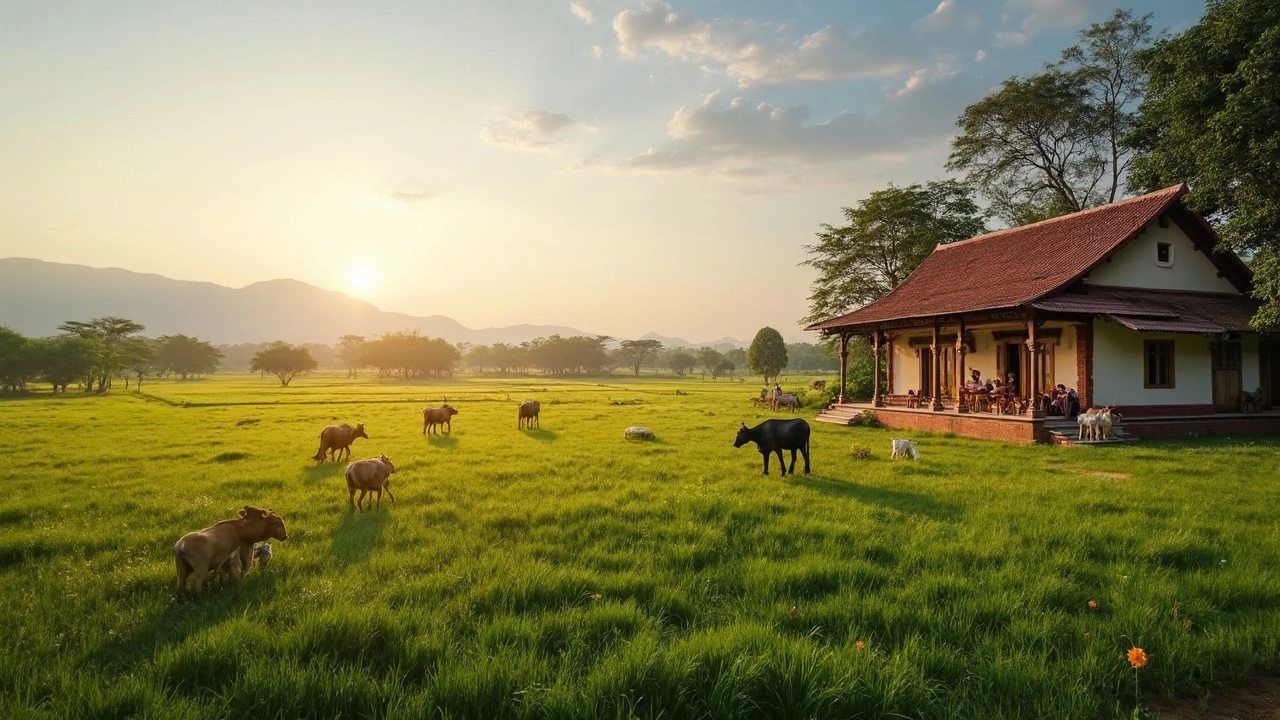10 Acres – Size, Uses, and Buying Tips
If you’ve ever heard someone say "I own 10 acres" and wondered how big that really is, you’re not alone. Ten acres might sound like a lot, but it can shrink or expand depending on what you want to do with it. Below you’ll get a quick picture of the space, ideas on how to use it, and practical advice for buying the right piece.
Visualizing 10 Acres
One acre equals about 43,560 square feet. Multiply that by ten and you get 435,600 square feet. Think of a standard football field (including the end zones) – that’s roughly 1.32 acres. So 10 acres is about eight football fields placed side by side. If you drive a car at 30 mph, you could circle the perimeter of a perfect‑square 10‑acre lot in under five minutes.
In everyday terms, 10 acres can hold a small farm, a spacious estate, or a mini‑development. It’s big enough for a house with a long driveway, a garden, a workshop, and still leave room for open space. It’s also small enough to manage without needing a full‑time staff, which makes it popular for first‑time land buyers.
Best Ways to Use 10 Acres
Build a custom home. Many buyers use 10 acres to construct a single‑family house with privacy. You can set the house away from the road, add a pool, a guest cottage, and still have room for a vegetable garden or a small orchard.
Start a hobby farm. A few acres of pasture, a couple of chicken coops, and a small barn can supply fresh eggs, milk, and maybe a few goats. If you’re into garden beds, 10 acres gives you space for raised beds, a greenhouse, and even a tiny orchard of fruit trees.
Invest for future development. Some investors buy 10‑acre parcels near growing towns, hoping the area will be rezoned for residential or mixed‑use projects. Keeping the land affordable now can turn into a solid profit later.
Recreational retreat. If you love the outdoors, you can set up a cabin, a small campsite, or even a tiny glamping spot. A fire pit, walking trails, and a pond can make the land a weekend getaway for friends and family.
Whatever you choose, remember to check local zoning rules. Some towns restrict building size, limit the number of structures, or require setbacks from the road. A quick call to the county planning office can save you headaches later.
Financing a 10‑acre lot works much like buying a house, but lenders look more at the land’s purpose. If you plan to build right away, a construction loan might be the best route. For pure investment, a land‑only loan often has a higher interest rate and a shorter term, so budget accordingly.
Lastly, don’t overlook the hidden costs: clearing the land, installing utilities, and maintaining fences. These expenses can add up, especially if the parcel is heavily wooded or lacks road access.
In short, 10 acres offers a sweet spot between a tiny lot and a massive ranch. With the right plan, you can build a home, start a small farm, or hold onto a piece of land that could appreciate over time. Take the time to map out your vision, check local regulations, and crunch the numbers before you sign. Happy land hunting!
Is 10 Acres Considered a Ranch? Size, Uses, and Buying Tips
by Arjun Mehta May 15 2025 0 VillasWondering if 10 acres counts as a ranch? Here's what you need to know about land size, how it's used, and if 10 acres fits the common ideas about ranches. Get tips on what you can do with 10 acres, from keeping animals to building your dream villa. We'll bust common myths about ranch sizes, give you real-world examples, and help you decide if 10 acres makes sense for your goals. Spot the difference between a ranch and other rural properties. Ready to see if 10 acres is enough for your ranch dreams?
READ MORE